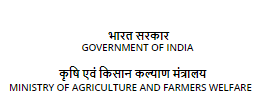Modified live attenuated Canine parvovirus vaccine Bareilly, IVRI/CPVnew2a/914
Background:
Canine parvovirus (CPV) causes canine parvoviral enteritis which first emerged in 1978 as an important cause of severe, often fatal enteritis in dogs. It has remained a leading cause of enteritis in dogs despite the wide availability of effective vaccines. CPV-2a and CPV-2b are the most common virulent strains found worldwide. In 2000, a new CPV-2c strain was discovered in Italy and other countries:
In India, all the three strains CPV-2a, CPV-2b and CPV-2c have been identified to date. This disease has been effectively controlled and managed by vaccines; and the vaccine against CPV is enlisted as a core vaccine. Most of the vaccines in the market are modified live virus vaccines based on the original virus type CPV-2 isolated more than four decades back in around 1978-1980’s. These have been found to be potent and able to prevent infection and successfully control the disease throughout the world. These vaccines based on original CPV-2 antigenic type, have been proved to protect dogs against infection with the other antigenic types.
There are, however, still many cases of clinical parvovirus infection in dogs which usually occur in young animals that are infected in the first few weeks of life, when passively acquired maternal antibodies are waning. Antigenic differences have been demonstrated between the antigenic types in neutralization tests, and it is possible that these differences are of some clinical importance when puppies with passively acquired antibodies (e.g., maternal antibodies) at around the minimum protective titre are challenged.
There is a concern for the real immunity conferred by CPV2 vaccines against the CPV2a and CPV2b types now circulating in the dog population as it has been reported that there are significantly higher neutralizing antibody titers to the homologous virus (CPV2) than to the heterologous virus (CPV2b). There is evidence to suggest that optimal protection may not be provided if CPV2 vaccines are used, considering that the original CPV2 has disappeared from the canine population worldwide and the CPV2 vaccine appears to confer a somewhat lower and shorter immunity against the other CPV2a/b/c type. Use of effective vaccines that induce longer immunity should be sought to control the spread of canine parvovirus infection.
Commercial vaccines available in India are based on CPV-2 and CPV-2b. The strain difference between field virus and vaccine virus could be one of the important attributable reasons for some of the cases of vaccine failure in the country. Based on the strain prevalence, incorporation of the field strain in the commercial vaccine may be considered for effective control of canine parvovirus infection in the country. In different reports, the recent viruses obtained from India were found to be of new CPV-2a antigenic type and it has been suggested to incorporate the prevalent CPV antigenic types in the vaccine formulations instead of prototype vaccine strains. Since, the new CPV 2a is the most prevalent antigenic type in India for the last more than eight years, a vaccine containing this homologous antigenic variant may be more effective for immunization of dogs in India.
Keeping this in view a successful cell culture passaged new CPV 2a vaccine candidate of Indian origin against parvoviral enteritis infections has been developed which has been preliminary examined in the natural host i.e. dog as per IP.
To control the incidence of Canine parvovirus enteritis infection due to different antigenic strains in domestic Indian dog population over the years, development of an indigenous vaccine using currently circulating virus in India will be of enormous aid in limiting this disease. Keeping this in view, a Modified live attenuated Canine parvovirus vaccine candidate Bareilly_IVRI/CPVnew2a/914 has been developed.
This vaccine can address the control of infectious enteritis of the dog; thus, it has the market potential for the dog owners, dog breeders and the shelters where the dogs are being used or housed throughout the country:
Technology Details:
The indigenous candidate vaccine is expected to induce robust protective immunity against the different prevailing antigenic viral strains circulating in the field and infecting the domestic dog population, and thus checking the spread of the disease:
i. The vaccines used in India are basically CPV 2 based which are quite old, and the most prevalent antigenic type in India is CPV 2a, thus the vaccine containing the most prevalent strain in the country would be more effective compared to the native “CPV 2” containing commercial vaccines:
ii. The vaccine strain used for immunization of dogs in India is not indigenous and thus has difference in amino acids has been remarkably distinct making the appropriateness of the use of this native strain to be used in vaccine candidate.


